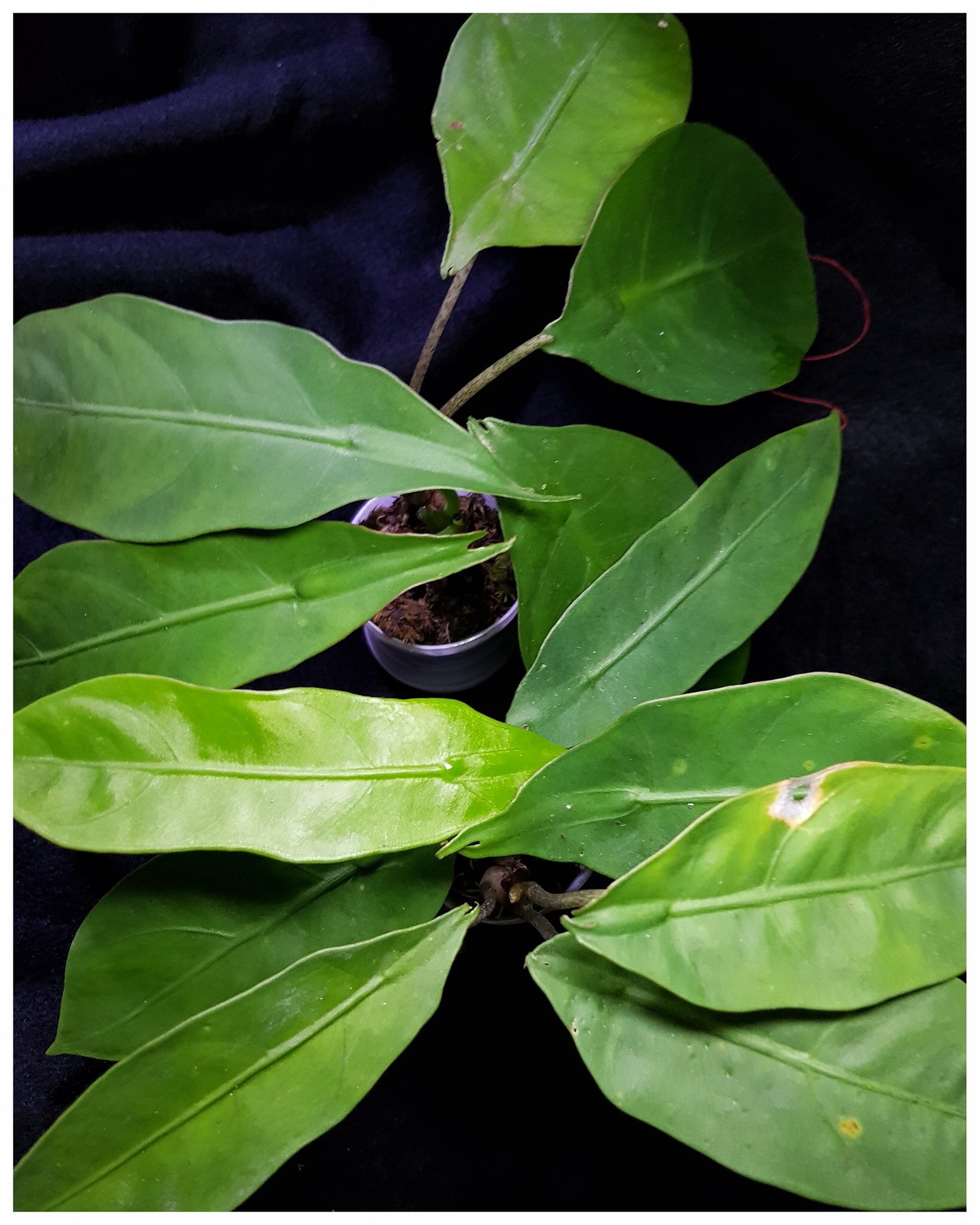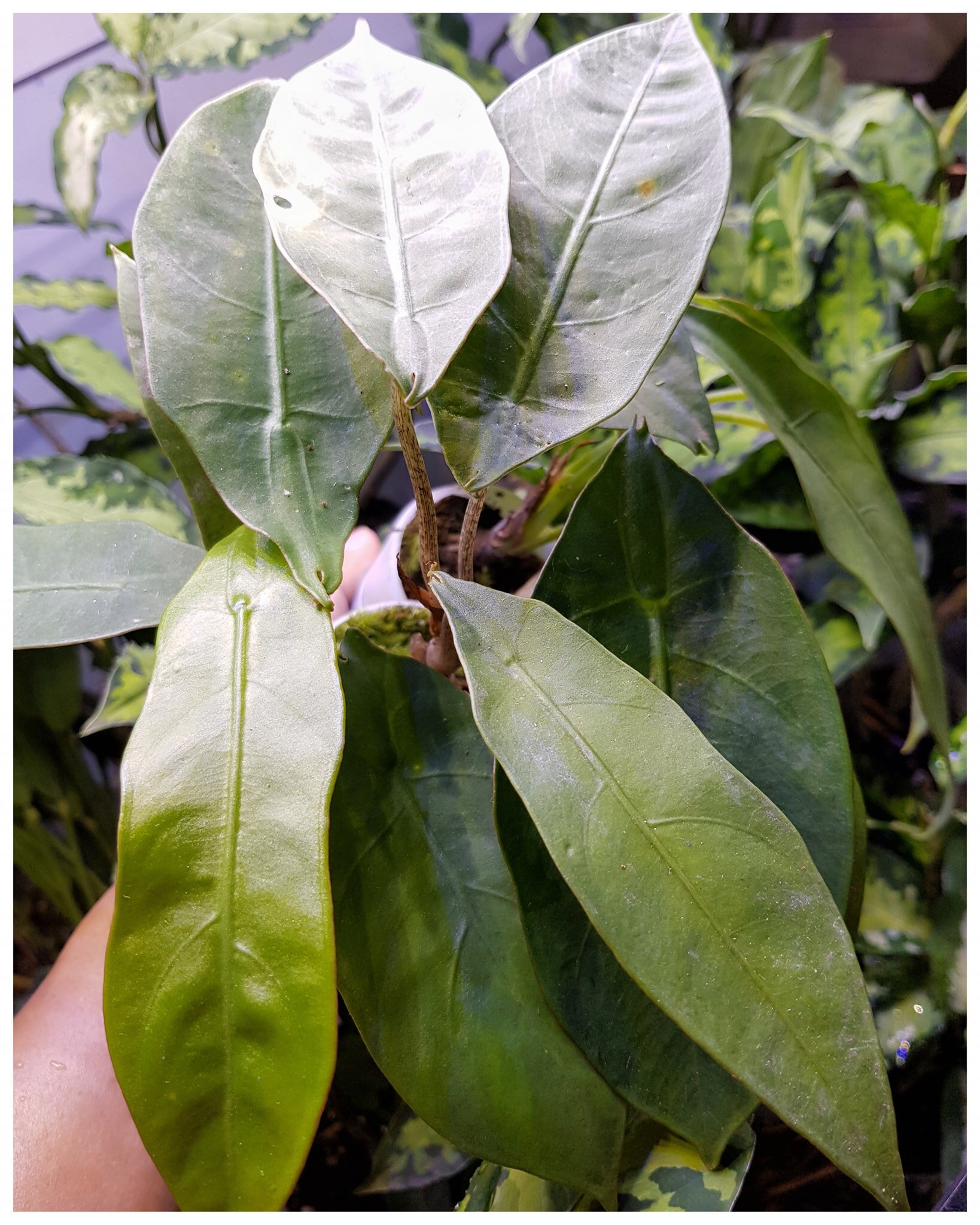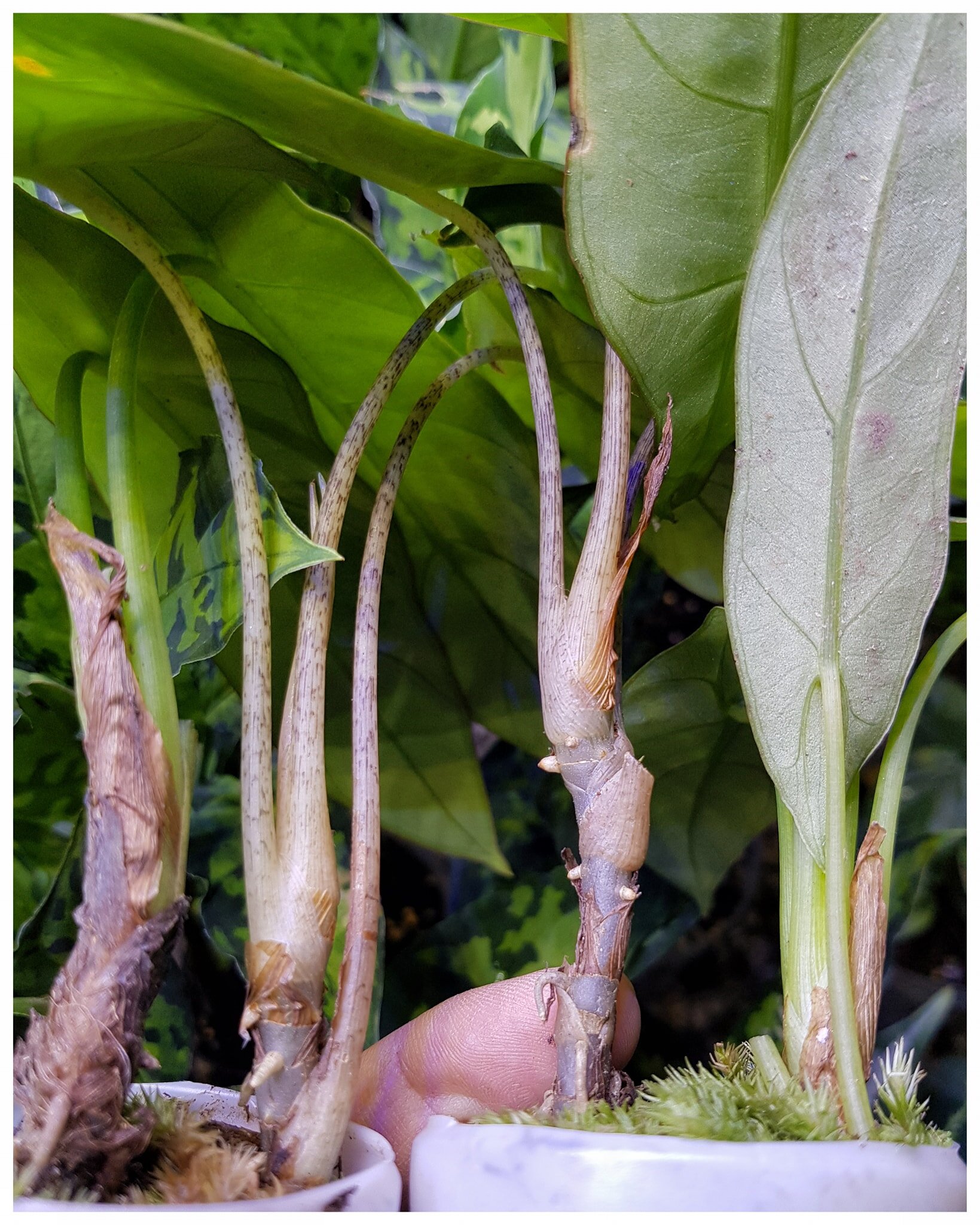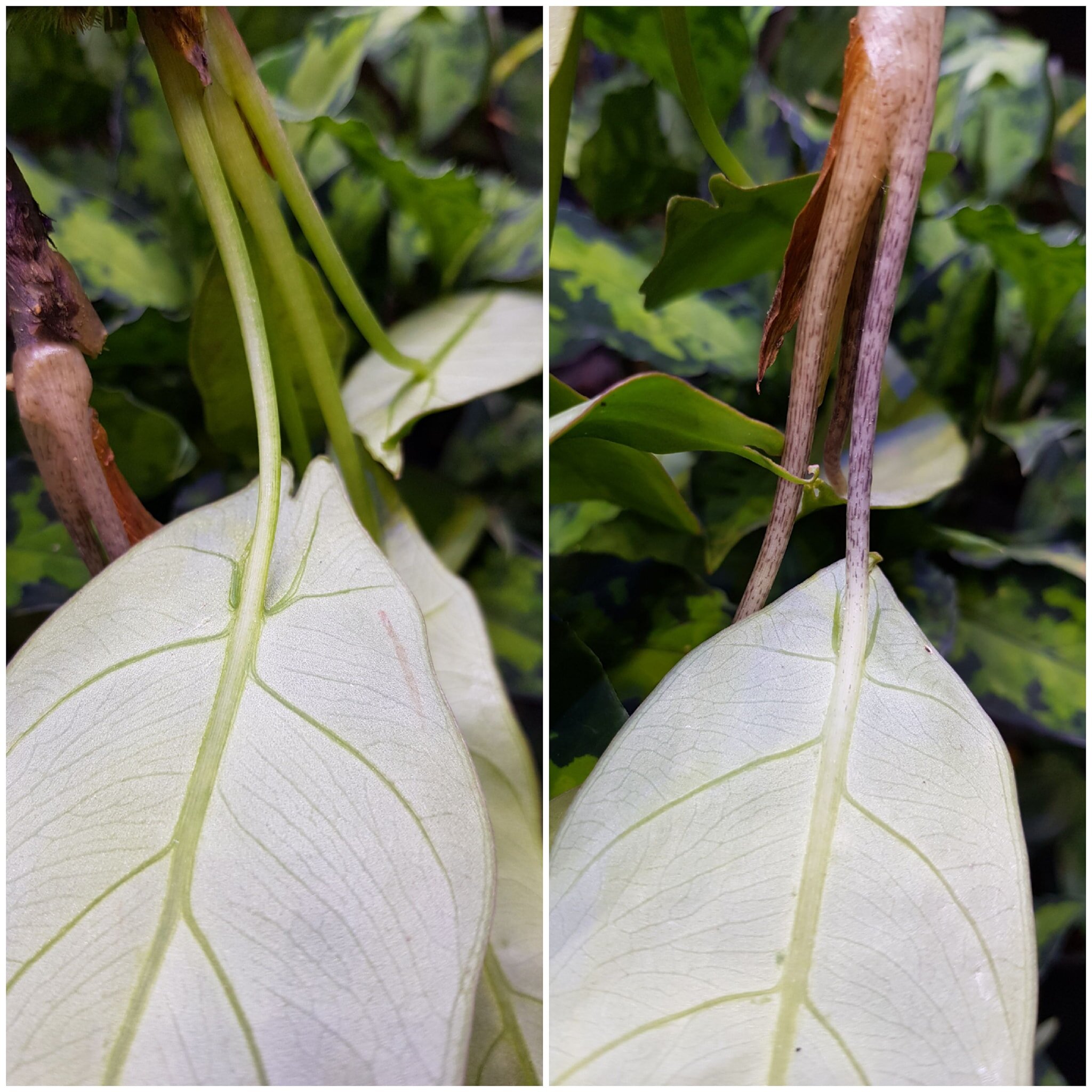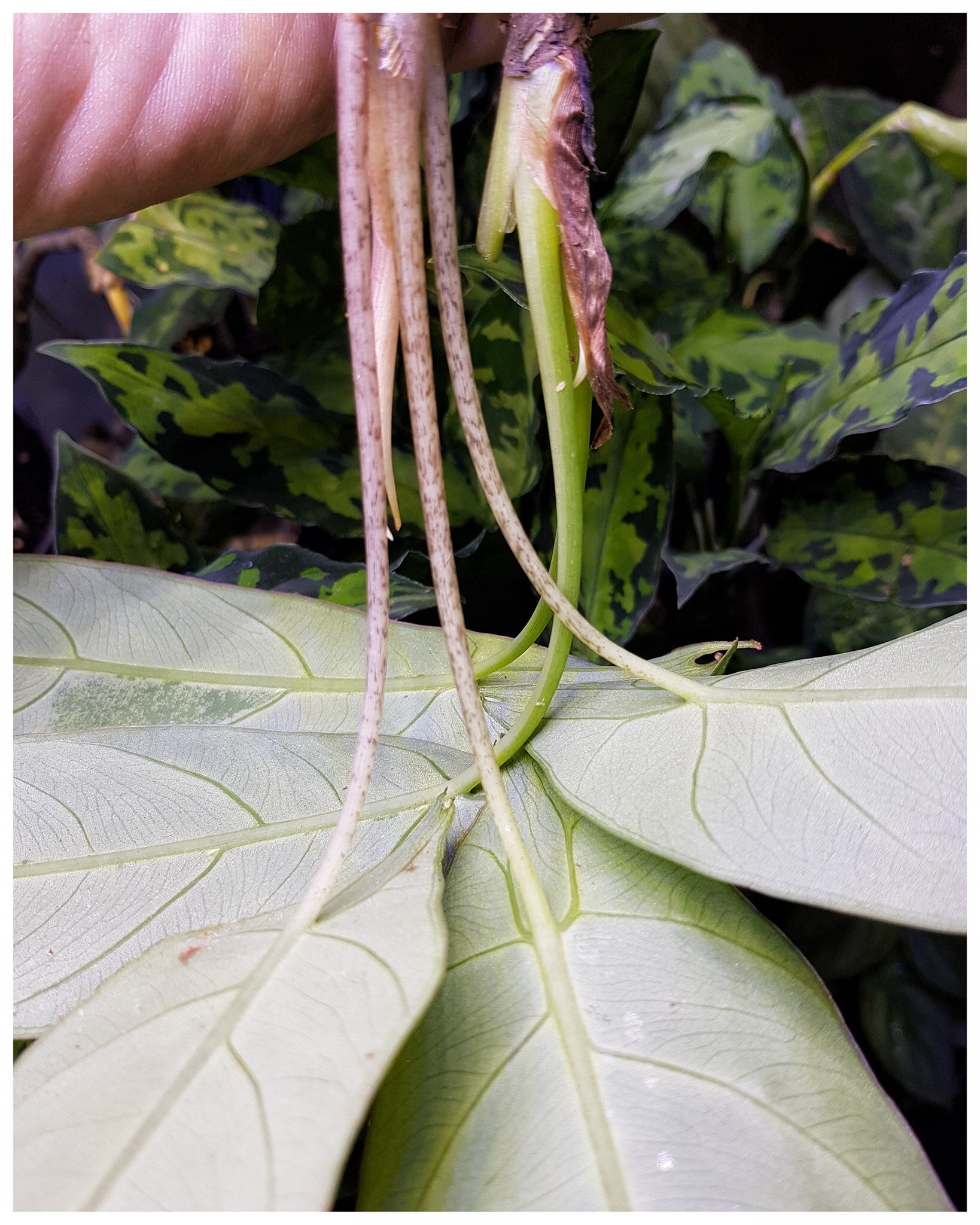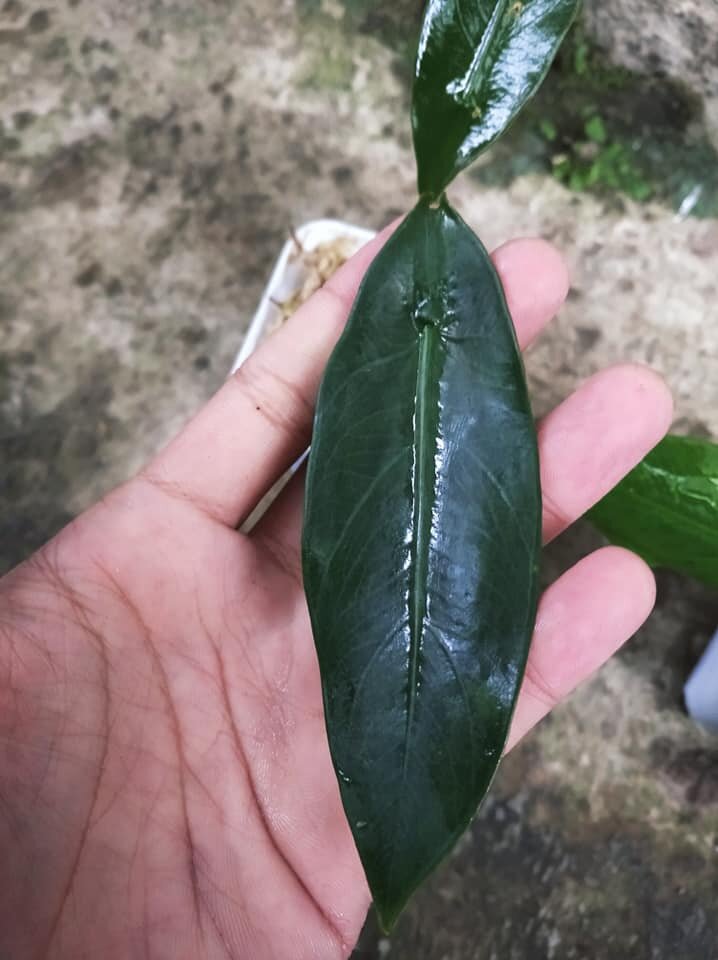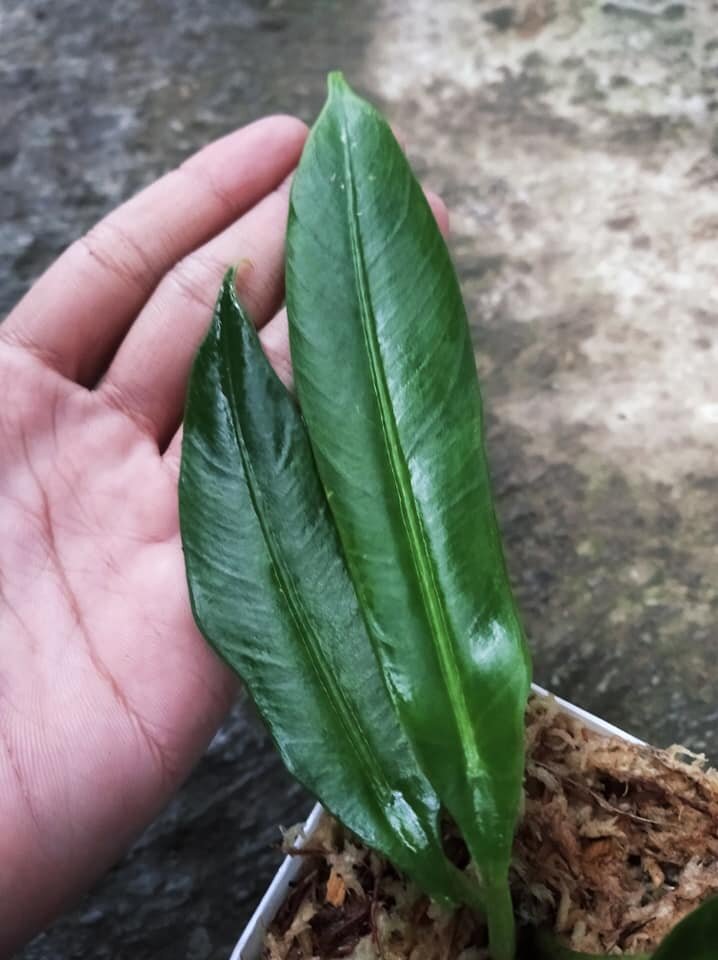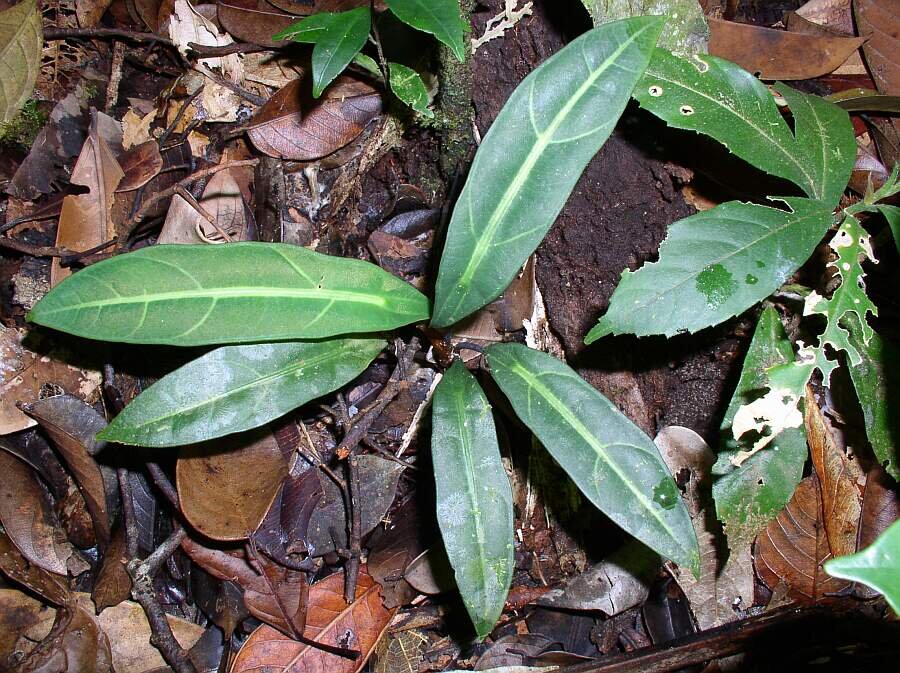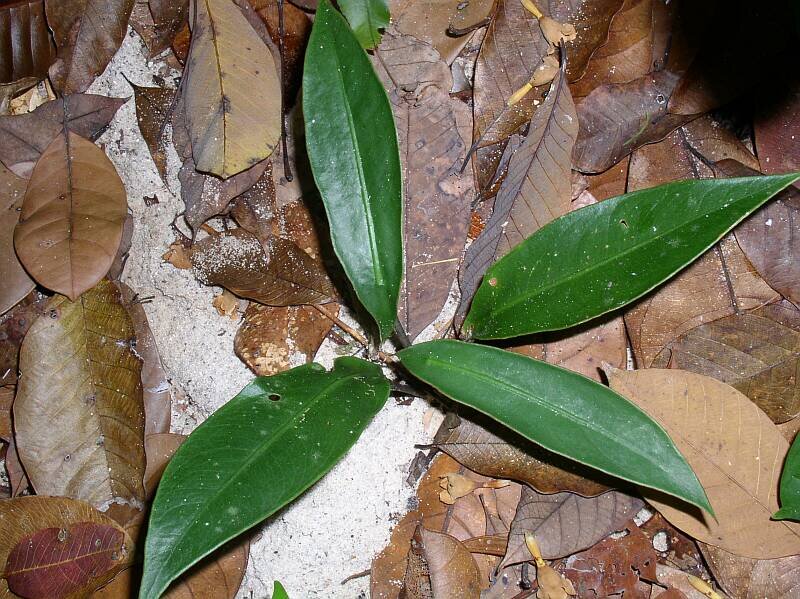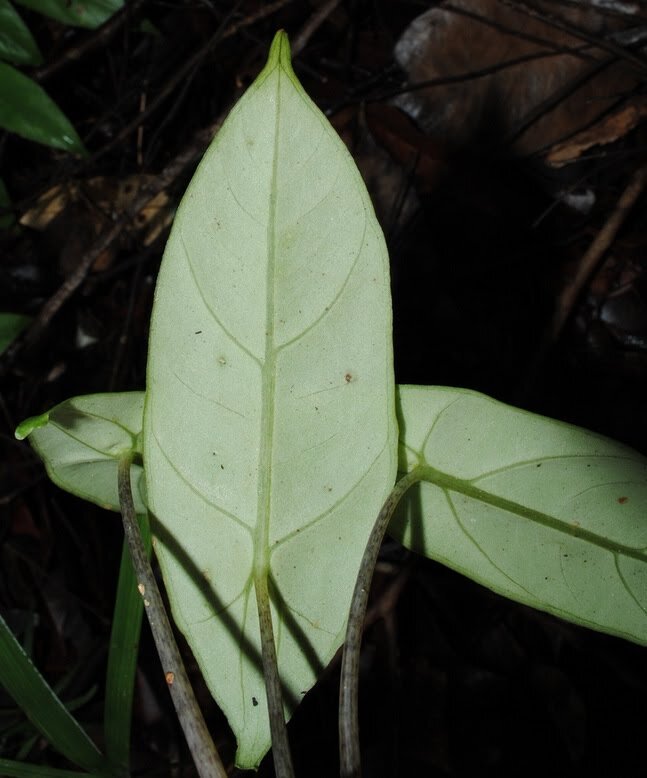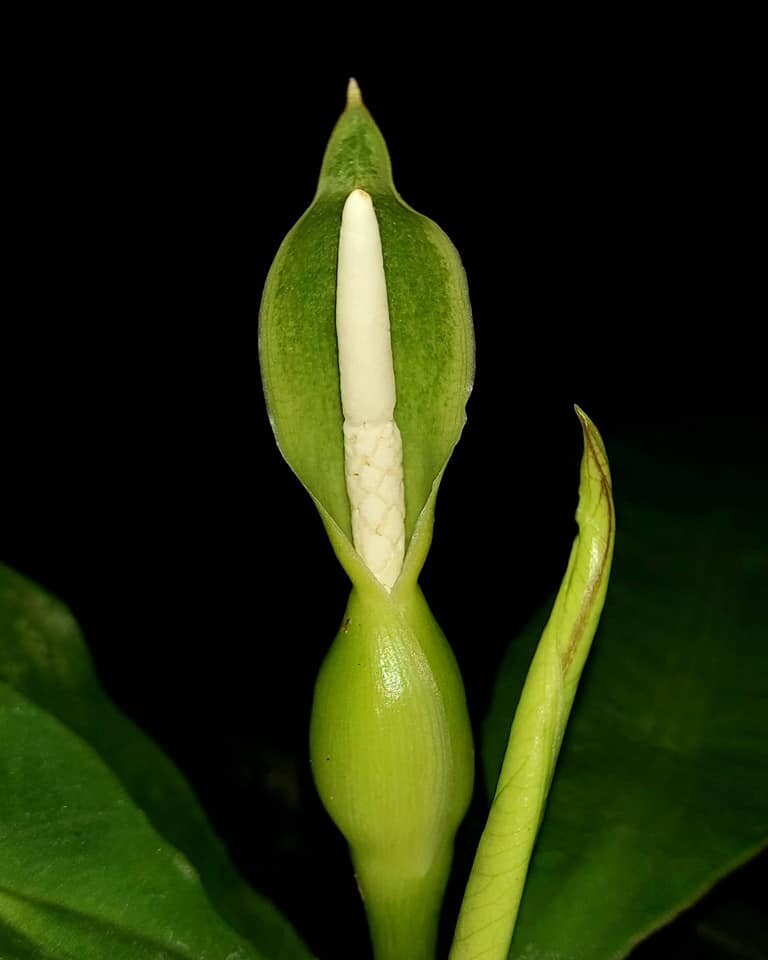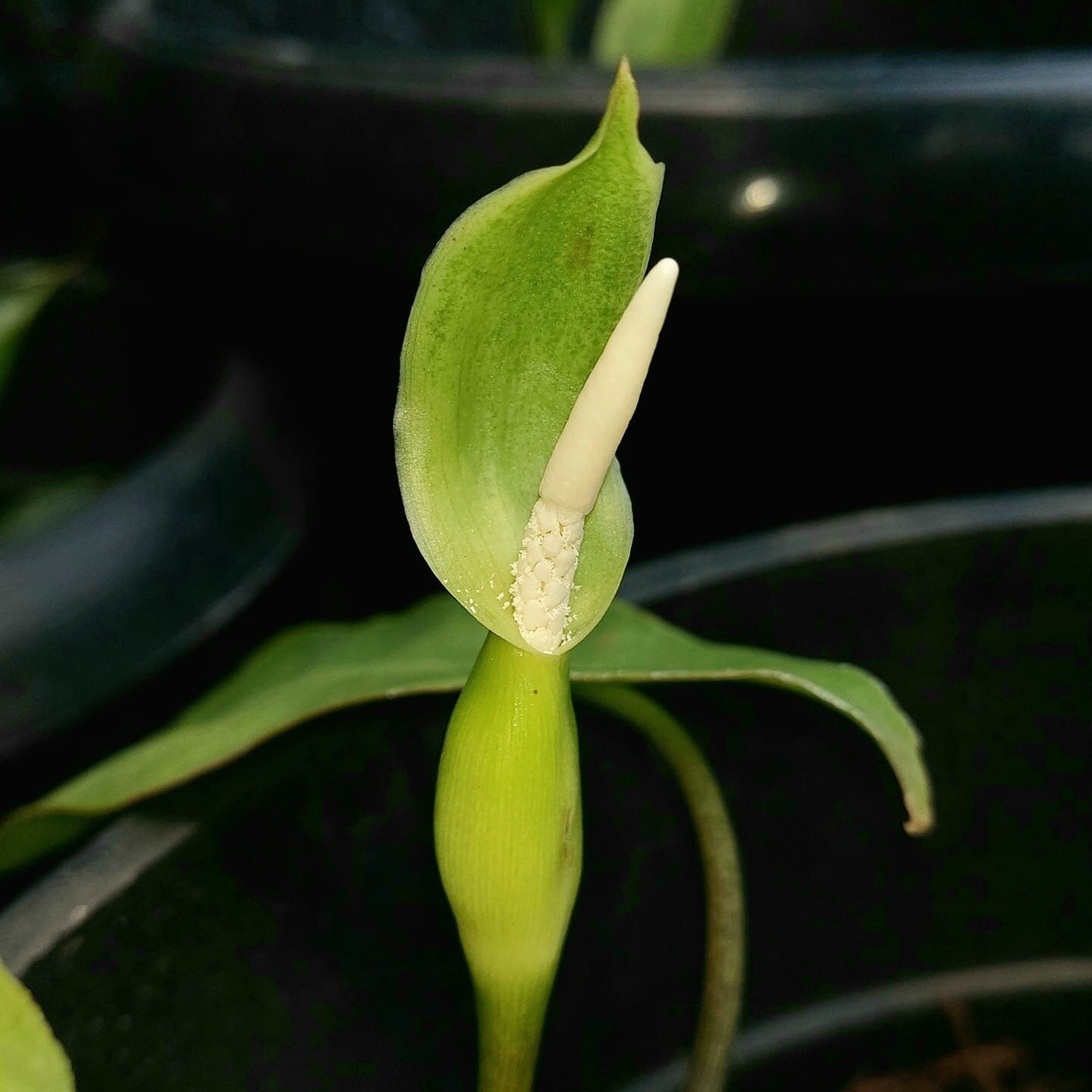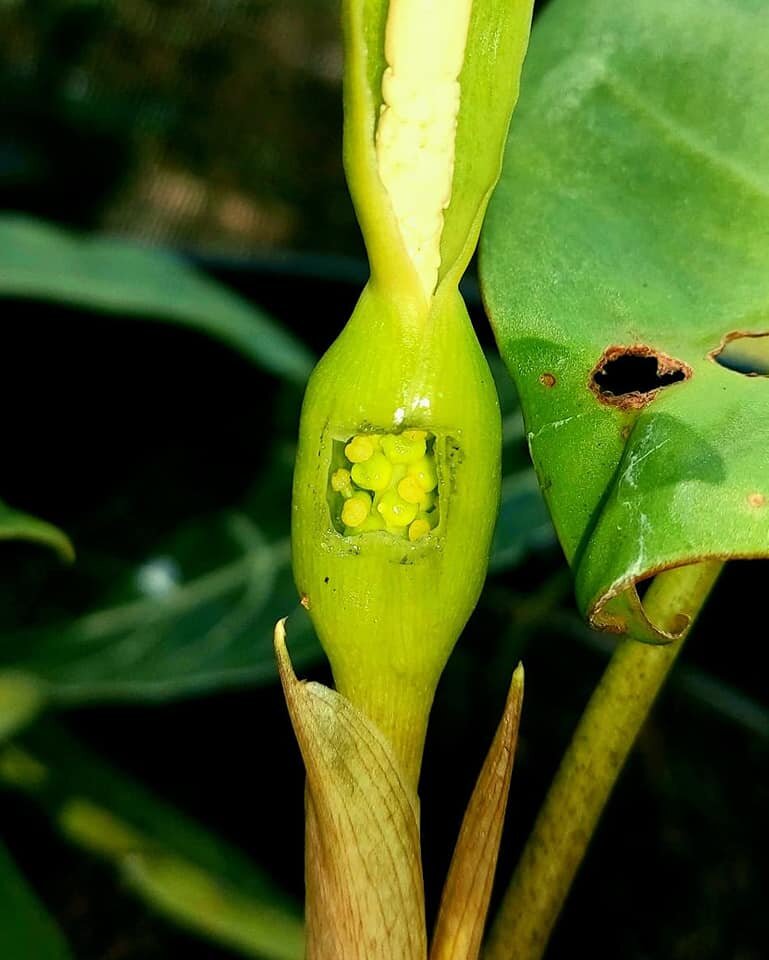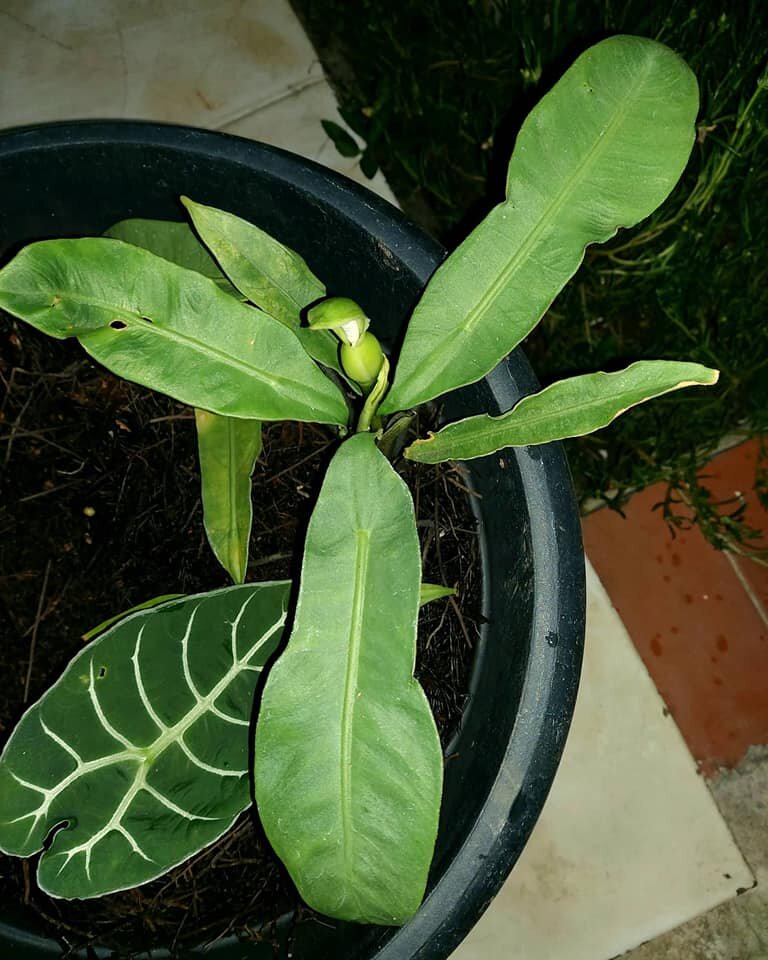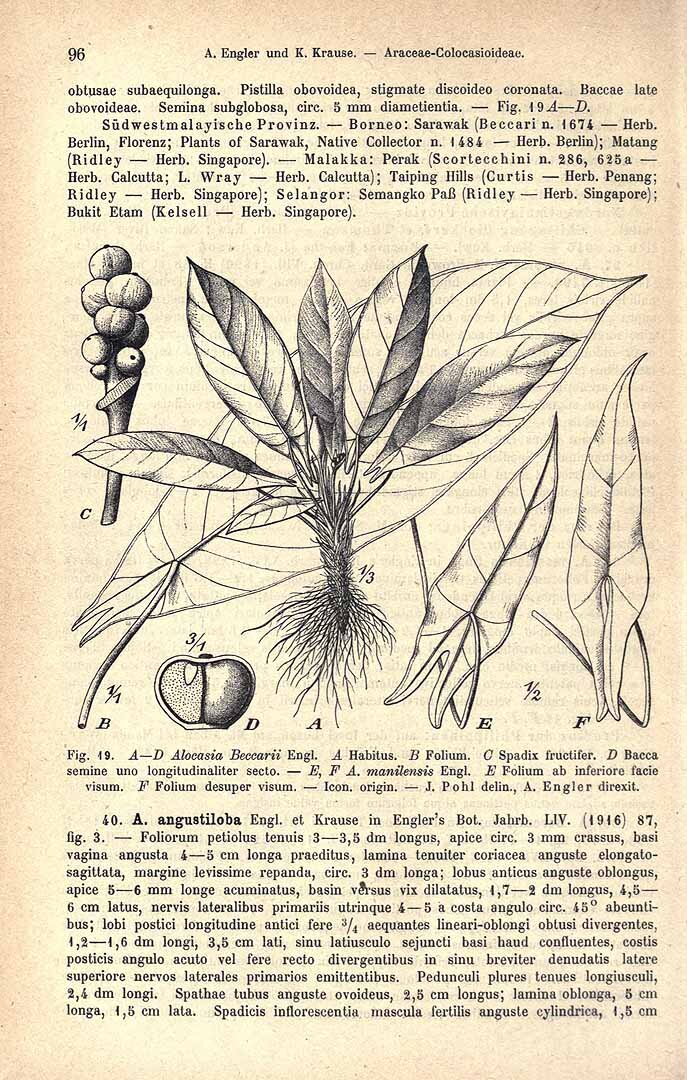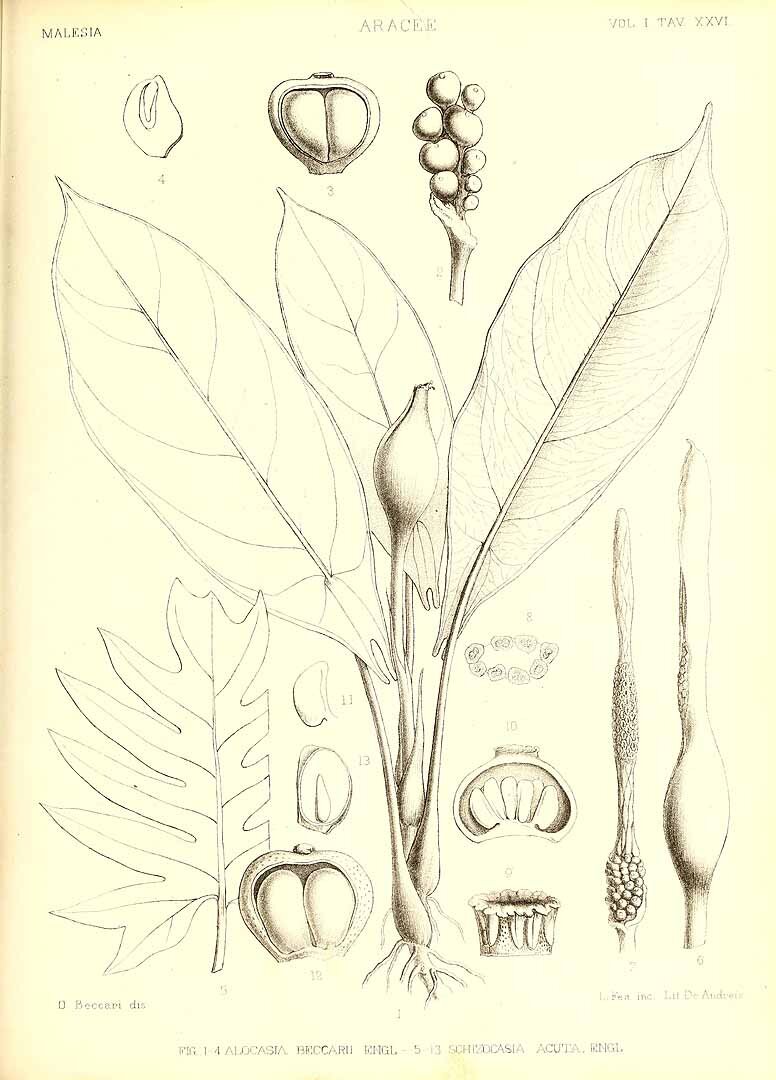ALOCASIA BECCARII
SYNONYMS: N/A
DISTRIBUTION: Indonesia | Borneo
CLIMATE: Equatorial lowland humid forest
Humidity is consistently high in the lowlands ranging from 80% to 90%
Temperature is relatively uniform throughout the year - within the range of 73°F/23°C early in the morning to 90°F/32°C during the day. Minimum temperatures in the lowland areas don’t generally dip below 68°F/20°C
The average rainfall per year is between 3,300 millimetres and 4,600 millimetres, depending on locality.
ECOLOGY: In forest on slopes at low elevation - to ca. 850 m, possibly to 1500 m on G. Kinabalu, often among or on boulders, often over sandstone.
SPECIES DESCRIPTION:
Small herb 12-28 cm tall; stem slender, 5-10 mm diam., condensed with the internodes usually somewhat wider than long; leaves several together, irregularly but frequently interspersed with lanceolate cataphylls to 5 cm long and drying red-brown; petioles green, sometimes flecked pale mauve, 6-16 cm long, sheathing in the lower V? or less; blades narrowly elliptic to ovate to narrowly obovate, mid-green above, paler below, coriaceous, 9 x 2.7-18 X 6 cm; anterior lobe widest usually ca. V4 of the way distal to
petiole insertion, occasionally level with petiole insertion, occasionally 1/2 way distal to petiole insertion; margin occasionally somewhat sinuate; anterior costa with 2-3 primary lateral veins on each side, diverging at ca. 45-60° and running to a submarginal vein 0.5-1 mm from the margin; axillary glands inconspicuous; secondary venation not forming interprimary collective veins; posterior lobes almost completely connate save for a shallow retuse notch, (V4)V3-2/5 the length of the anterior lobe, together attenuate; posterior costae subparallelINFLORESCENCE:
Inflorescence solitary to paired; peduncle subequalling the petioles; spathe whitish, ca. 4 cm long, constricted ca. 1.5-2 cm from the base; lower spathe narrowly ovoid, distally somewhat curved adaxially; limb narrowly oblong-lanceolate; spadix shorter than the spathe, very shortly stipitate; /ema/e zone 4 mm long, a few loosely packed large pistils, or reduced to a single whorl; pistils ca. 3 mm long; ovary globose-ovoid, 2.5 mm diam.; style ca. 0.5-1 mm long, slender; stigma prominently ?2-lobed; sterile interstice a single whorl of synandrodia ca. 1.5 mm diam., or reduced to a single synandrode and the rest naked; male zone conic, 5-8 mm long, entirely within and filling the upper spathe chamber; synandria large, ca. 3 mm diam., 3-4-merous, thecae not overtopped by synconnective; appendix pale apricot, narrowly cylindric, 1.3-2 cm long, ca. 3 mm disim.; fruiting peduncle hardly longer than flowering peduncle; fruiting spathe ovoid, ca. 2 cm long; ripe fruit orange to orange-red. VARIEGATED FORMS: N/A
ETYMOLOGY: Alocasia beccarii was named after Odoardo Beccari, an Italian naturalist who discovered the titan arum (Amorphophallus titanum), the plant with the largest unbranched inflorescence in the world, in Sumatra in 1878. This botanist is denoted by the author abbreviation Becc.
NOTES: The name Alocasia beccarii has been used, in the literature and/or on herbarium sheets, for five West Malesian species of rather small plants sharing various manifestations of a distinctive more or less elliptic entirely peltate leaf blade - Alocasia beccarii s.s., Alocasia kerinciensis, Alocasia minuscula, Alocasia peltata and Alocasia perakensis. Of these, Alocasia peltata and Alocasia kerinciensis have very conspicuous intramarginal veins and are montane species, Alocasia minuscula has distinctive striate venation, very large synandrodia and is restricted to lowland peat swamp-forest, and Alocasia perakensis is much more robust than Alocasia beccarii and is a montane element restricted to Peninsular Malaysia. Alocasia beccarii itself is distinguished by the combination of absence of intramarginal leaf vein, more or less condensed stem, secondary venation arising from the costae and primary veins, small size compared to Alocasia perakensis and occurrence at low elevation in non-swampy sites. Further discussion of its distinction from Alocasia perakensis can be found under that species.
The two collections from G. Kinabalu cited below differ from Alocasia beccarii in the strict sense in having relatively broader posterior lobes with the tips less markedly acute, less completely joined and slightly out-turned at the tips. The leaf texture appears to be more membranous. The venation is nevertheless typical for Alocasia beccarii. The altitude from which they were collected (4000-5000 ft) is significantly higher than collections of Alocasia beccarii s.s., and it is possible that they represent another species in this group. Neither collection is in flower. Brooke 8680, from Keranji, Sarawak, is anomalous in having oblanceolate leaves, with very reduced posterior lobes.
Other specimens seen: SARAWAK: Kuching, Brooke 8318 (L); Keranji, Brooke 8680 (L). BRUNEI: N. Temburong, Bukit Biang, Ashton A172 (K); Belait Distr., Ulu Ingei, Bukit Batu Patam, Boyce et al. 274 (K); Temburong Distr., Bangar, Bukit Patoi, Boyce et al. 350 (K); Temburong, Batu Apoi, Bukit Gelagas, Simpson & Marsh 2271 (K). SAB AH: Kinabalu, Penibukan, Clemens & Clemens 31548 & 50499 (both SING); Sipitang Distr., W slope of G. Lumaku, Wood 798 (K).
CULTIVARS: N/A
HYBRIDS: N/A

